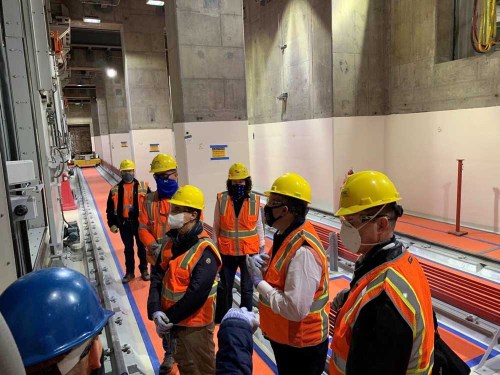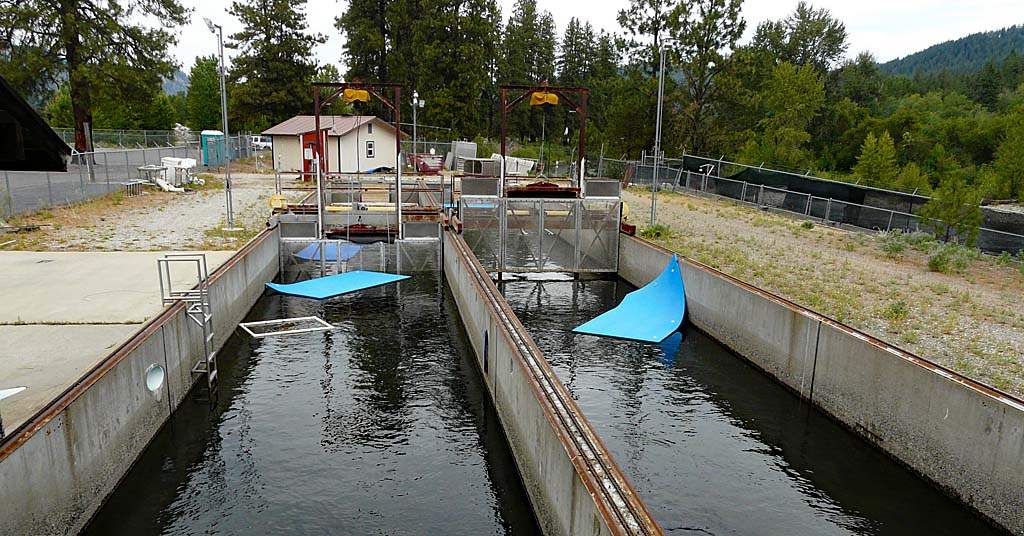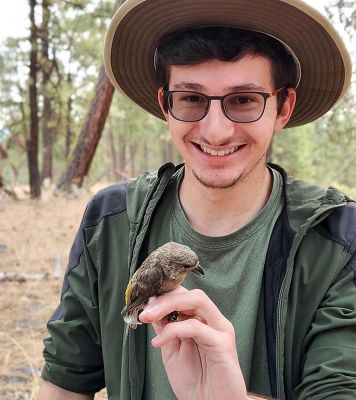World’s largest plant for nuclear waste cleanup at Hanford ready for startup
Published 8:11 am Thursday, January 7, 2021

- Department of Energy and Hanford officials tour the Hanford vitrification plant’s Low Activity Waste Facility, where construction has been completed. The plant is expected to be tested and ready to treat radioactive waste by the end of 2023.
RICHLAND, Wash. — After more than 18 years, construction is finished on the key parts of the $17 billion Hanford vitrification plant that will be needed for initial treatment of radioactive waste.
Building the world’s largest plant to treat radioactive waste is “truly a scientific and engineering feat,”said Sen. Maria Cantwell, D-Wash., in taped remarks played at a Wednesday, Jan. 6, ceremony announcing the accomplishment.
Trending
“This is an unprecedented step toward cleaning up the most toxic site in the United States … and restoring the Hanford site to return it to the community,” she said.
Mark Menezes, deputy secretary for energy, was at Hanford for the announcement and said it “marks a tremendous leap forward for the Hanford workforce and the Tri-Cities community.”
“Hanford is on the precipice of actual tank waste treatment,” he said. “Decades of hard work are paying off.”
The Department of Energy and its contractor Bechtel National now will spend the next three years starting up all the systems needed to treat low activity radioactive waste, and then practice operating the plant with a nonradioactive waste simulant.
The vitrification plant, or Waste Treatment Plant, is planned to treat much of the 56 million gallons of radioactive and hazardous chemical waste in underground tanks at the Hanford nuclear reservation in Eastern Washington.
The Hanford site was used from World War II through the Cold War to produce two-thirds of the plutonium for the nation’s nuclear weapons program.
Trending
Construction started at the plant in 2002, with a deadline set by the federal court in 2016 requiring DOE to start treating radioactive waste at the plant by the end of 2023. The court recently agreed to give DOE at least eight more months to start treating waste because of the COVID-19 pandemic.
All but about 10% of the workers at the nuclear reservation were sent home in late April 2020, with work done by telecommuting when possible, to help contain the spread of the coronavirus. Workers area returning to on-site work in phases.
But Brian Vance, the DOE Hanford manager, said he believes waste treatment still will start in 2023.18-year projectWhen ground was broken for the vitrification plant in 2002, the plan was to start treating both the least and most radioactive waste in underground tanks at the same time.
But plans changed after technical issues were raised in 2012 on the parts of the plant that will handle high level waste.
Construction still must be completed on large facilities at the plant that will handle high level radioactive waste.
In recent years, DOE has been focused on startup of the parts of the plants that will treat low activity radioactive waste, including developing a system to pretreat, or separate low activity waste from the rest of tank waste, before it is sent to the plant.
The low activity radioactive waste will be treated at the plant’s Low Activity Waste Facility, which will mix batches of pretreated waste with glass forming materials and then heat it to 2,100 degrees Fahrenheit to produce a stable glass form for disposal.
The heated glass mixture will be poured into stainless steel containers that are 7-feet tall and 4-feet in diameter for disposal at a lined landfill in central Hanford.
The Low Activity Waste Facility has a footprint about the size of one and a half football fields and is 90 feet high, or the equivalent of about seven stories.
Its construction required 28,500 cubic yards of concrete, 6,200 tons of structural steel and 943,500 pounds of ductwork.Starting melters









